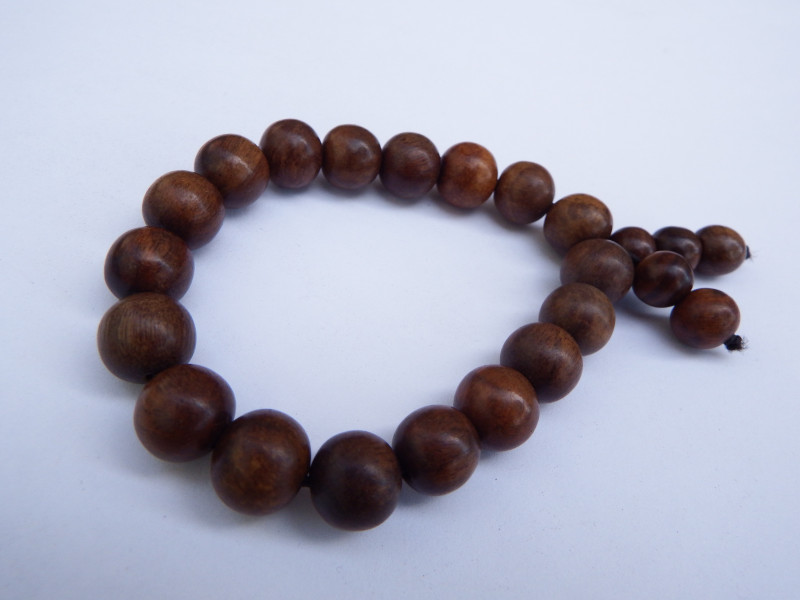43ct Pair of Giraffe Polka DoT styled BAKEELITE Gemstone Earrings Lot VNTG
- SKU
- Dimensions (mm)
- 26.000 x 26.000 x 20.000mm
- Weight (g)
- 8.600
- Colours
-
Bakelite, spelled with a "k," is a type of synthetic plastic invented by Belgian chemist Leo Baekeland in 1907. It was the first thermosetting plastic, meaning it could not be melted and reformed once set. This property made Bakelite extremely useful in a wide range of applications, particularly during the early 20th century when it became popular.
Bakelite was hailed as a revolutionary material due to its heat resistance, electrical nonconductivity, and durability. It was initially used for industrial purposes such as electrical insulators, radio casings, and various mechanical parts. However, it quickly found its way into consumer goods and jewelry due to its ability to be molded into intricate shapes and its attractive appearance.
In the 1920s and 1930s, Bakelite became particularly fashionable in the production of jewelry, with designers creating colorful and bold pieces that appealed to the Art Deco aesthetic of the time. Bakelite jewelry remains highly collectible today, sought after for its historical significance, unique appearance, and enduring durability.
Bakelite is typically made from phenol formaldehyde resin, which is formed by combining phenol (an aromatic organic compound) with formaldehyde (a simple organic compound). The resulting material is then molded and cured under heat and pressure to create the final product. Despite its early popularity, Bakelite eventually fell out of favor as newer and more versatile plastics were developed. However, it remains an important milestone in the history of plastics and continues to be admired by collectors and enthusiasts alike.
- SKU
- Dimensions (mm)
- 26.000 x 26.000 x 20.000 mm
- Weight (g)
- 8.600
- Colours
-
Bakelite, spelled with a "k," is a type of synthetic plastic invented by Belgian chemist Leo Baekeland in 1907. It was the first thermosetting plastic, meaning it could not be melted and reformed once set. This property made Bakelite extremely useful in a wide range of applications, particularly during the early 20th century when it became popular.
Bakelite was hailed as a revolutionary material due to its heat resistance, electrical nonconductivity, and durability. It was initially used for industrial purposes such as electrical insulators, radio casings, and various mechanical parts. However, it quickly found its way into consumer goods and jewelry due to its ability to be molded into intricate shapes and its attractive appearance.
In the 1920s and 1930s, Bakelite became particularly fashionable in the production of jewelry, with designers creating colorful and bold pieces that appealed to the Art Deco aesthetic of the time. Bakelite jewelry remains highly collectible today, sought after for its historical significance, unique appearance, and enduring durability.
Bakelite is typically made from phenol formaldehyde resin, which is formed by combining phenol (an aromatic organic compound) with formaldehyde (a simple organic compound). The resulting material is then molded and cured under heat and pressure to create the final product. Despite its early popularity, Bakelite eventually fell out of favor as newer and more versatile plastics were developed. However, it remains an important milestone in the history of plastics and continues to be admired by collectors and enthusiasts alike.
| Shipping provider | Shipping to Canada | Shipping to rest of world |
|---|---|---|
| Standard Shipping - Tracked | $17.00 / 7 days | $16.50 / 7 days |
|
Canada
Standard Shipping - Tracked is discounted to $21.00 on orders with 2 or more items
Rest of the world
Standard Shipping - Tracked is discounted to $21.50 on orders with 2 or more items
|
||

-
 Positive
PositiveBeautiful bracelet
-
 Positive
Positive.Very nice looking cross. Very delicate looking
-
 Positive
PositivePaid and shipped - no feedback left after 100 days
-
 Positive
PositivePaid and shipped - no feedback left after 100 days
-
 Positive
PositivePaid and shipped - no feedback left after 100 days
















